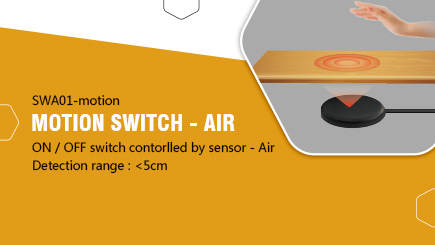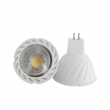Intelligent LED constant current drive source
The core of intelligent technology is adaptive. Any technique that automatically adjusts the work of the device according to changes in the environment to get the best results is adaptive. The use of adaptive later can change the traditional technology, resulting in unexpected results.
Intelligent LED constant current source is an example.
1. Classic linear constant current source
We know that all the power can be divided into two kinds of constant voltage power supply and constant current power supply, constant voltage power supply is the output voltage is stable, does not change with the input voltage and load changes, while the constant current power supply is constant current output, Voltage and load changes. LED because it is a semiconductor diode, its volt-ampere characteristics with a negative temperature coefficient, if the use of constant voltage power supply, it will make its current more and more burned, it must use constant current power supply. And its implementation method, there are two, one is the switch type, the other is a linear type. The advantage of switching type is that the efficiency is relatively high (about 90%). The disadvantage is that the number of components is high, the reliability is low, the volume is high and the cost is high. The linear constant current source is the opposite, the number of components is very small, the reliability is high Small, low cost, the disadvantage is very low efficiency, only about 85%.
2. The efficiency of linear constant current source
The efficiency of the linear constant current source decreases as the input voltage increases. Its typical efficiency curve is shown in Figure 1:
In the mains voltage of 220V, its efficiency is only 85%.
However, when the lower the input voltage, the efficiency is high, then there is no possibility that this linear constant current source in the 220V when the efficiency is also high?
This requires us to study in detail the circuit composition and performance of linear constant current sources.
3. The use of ordinary constant current diode linear constant current source
In fact, there are many different constant current constant current diodes available, so do not need to use the parallel method to get the required constant current value. So as long as the use of a constant current constant current constant current diode and all the LED series can be achieved on the constant current LED power supply, we can see that the circuit is very simple!
Its working principle can be seen from its volt-ampere characteristics:
It can maintain constant current in Vk up to the input DC voltage range of the POV. And the absolute value of Vk is less than 3V, assuming that the rectified DC voltage is 300V, the constant current value is 0.1A, then the total power is 30W, if the total voltage of the LED string is also close to 300V, leaving the constant current diode work in Vk Point, then it consumes only 0.3W of power, its efficiency is (30-0.3) / 30 = 99%.
But when the input voltage increases, the constant current diode must take on the consumption of these excess voltage function, its operating point on the right shift, while the power consumption is gradually increasing, the overall efficiency will gradually reduce the performance of its efficiency Of the linear decline.
It can be seen that the use of constant current diode low efficiency characteristics are born, all constant current diodes must be used with a large heat sink shell package, it seems unavoidable.
This is also the general textbook is so to say.
4. Using adaptive methods to improve the efficiency of linear constant current source In order to improve the efficiency of linear constant current source must come up with completely different ways.
Because our application is the power supply to the LED, the LED is the load of our linear constant current source. Its number must meet the rectified voltage output, for example, assuming that the rectified voltage is 300V, each LED forward voltage is 3V, then you need 100 LED series. When the mains voltage increases, the rectified voltage increases, but the LED is powered by the constant current source, so its forward voltage does not change, the increased rectified voltage must be borne by the constant current diode, so that The overall efficiency is necessarily reduced.
Then there is no way not to let the constant current diode to bear the rectified voltage rise?
The best solution is to adaptively change the number of LEDs. When the mains voltage increases, it increases the number of LED, when the mains voltage decreases, it reduces the number of LED, which can easily use an adaptive digital switching circuit to achieve. Its schematic is shown below.
Which part of the box in the LED is able to adaptively access to the main string LED, can also be adaptive from the main string to disconnect. The number of access or disconnection is determined by the size of the input voltage change. It can sense the input voltage changes, and thus to determine the number of LED changes, so it is adaptive, it can be said to be intelligent.
5. Intelligent LED constant current source performance
5.1 Adaptive of input voltage
As mentioned earlier, the use of adaptive control, the constant current source efficiency can be as high as 99%. And this efficiency can be achieved within a wide range of input voltage variations. The following is the relationship between efficiency and input voltage changes:
The blue is the efficiency of the constant current source itself. The red is the total efficiency after adding the rectifier. When the mains voltage changes within 175V-265V, the efficiency of the constant current source can be kept constant at 99% The loss of the flow can also be higher than 98%.
5.2 Adaptive of temperature
When the ambient temperature changes, the constant current diode power consumption will increase, for example, when the ambient temperature increases, due to the LED volt-ampere characteristics of the negative temperature coefficient, its forward voltage will be reduced, this time the total LED string The voltage will be lower than the rectified voltage, so the constant current diode voltage drop will rise, power consumption will increase. This intelligent constant current source increases the number of LEDs in the LED string so that its total voltage increases, leaving the total voltage and rectified voltage to remain matched to maintain high efficiency. The measured results are as follows:
As can be seen from the figure, when the ambient temperature rises from 35 degrees to 85 degrees, the whole efficiency with the input voltage curve is almost exactly the same, always maintained at 98% or more (including the efficiency of the rectifier).
5.3 Adaptive of LEDs with different forward voltages
This intelligent LED constant current source also has an adaptive function that is adaptive to different forward voltage LEDs. In the same LED string, you can use different forward voltage LED, mixed, the adaptive intelligent LED constant current source can still automatically switch the number of LEDs to ensure that its total efficiency of 99%. This patent has recently been authorized by the US Patent Office.
5.4 Change the number of LEDs without changing their luminous flux
If only the number of LEDs is changed, the total luminous flux will change as the current of the constant current source does not change. This problem is also taken into account in the overall design of the intelligent LED constant current source, while changing the number of LEDs while adaptively changing the current value of the constant current source so that its total power and total luminous flux remain unchanged. The results are as follows:
As can be seen from the figure, with this adaptive adjustment, in the different input voltage range, the input power, output luminous flux and the overall light effect are basically the same.
6. Photoelectric integration of the light engine
This intelligent LED constant current source completely breaks the conventional knowledge of the linear constant current source described in the textbook, and achieves 99% efficiency over time. Which can be achieved to the constant current source and light source on the same piece of aluminum substrate, and made photoelectric integration of the light engine. Because its own power consumption is very low, so put it into the light source of the aluminum plate will not increase the LED junction temperature.
This intelligent LED constant current source efficiency of up to 99%, which is tantamount to realize a non-power constant current source. LED constant current source efficiency is usually 85-90%, that is to say that the use of this intelligent constant current source can be further energy saving 10-15%. Its meaning is very important!





